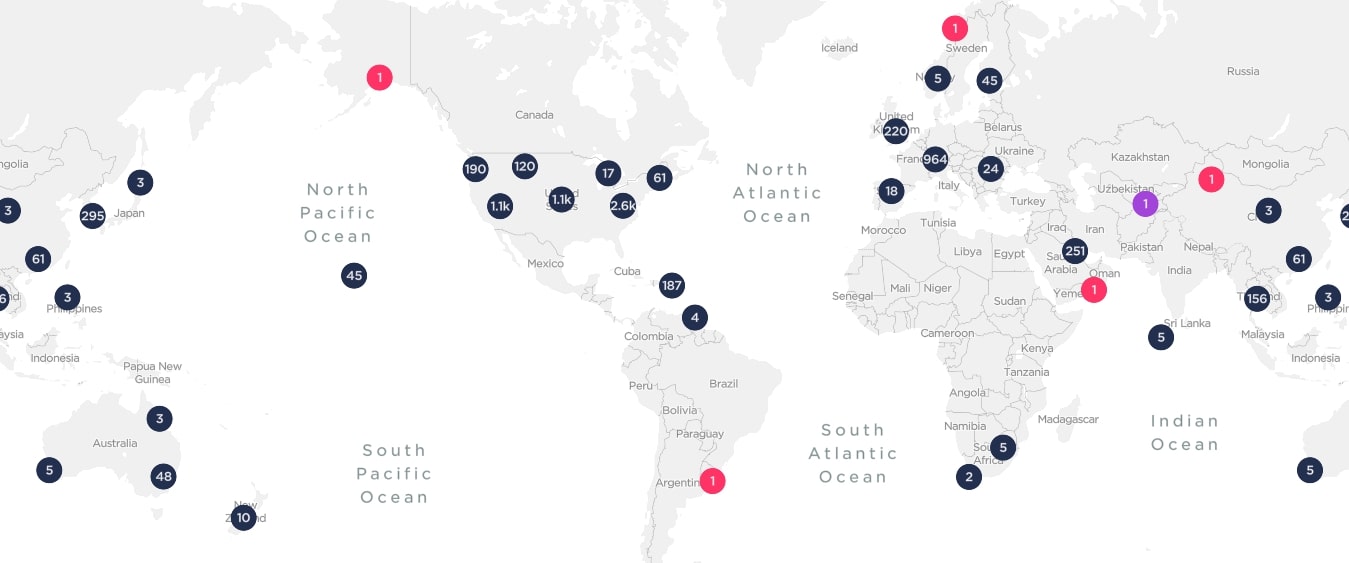Does your community’s strategic economic development plan envision a vibrant 5G broadband future?
Broadband infrastructure is critical for business growth, improvements in productivity, and economic competitiveness. Advanced broadband is essential for the delivery of business, education, government, healthcare, workforce development, and other Internet services. More than ever, communities connected to fast, reliable broadband are finding themselves on the winning side of the digital divide.
What is 5G?
Fifth-generation (5G) is the next generation of wireless technology. It refers to the latest deployment of mobile broadband networks that will eventually replace, or at the very least, enhance the fourth-generation (4G) of broadband cellular network technology. Operating in a similar fashion, 4G technologies succeeded 3G, itself an upgrade to the older 2G and 1G networks.
Each successive generation of mobile broadband is characterized by higher connectivity speeds and increased computing capacity. 5G cell towers are up to 100 times faster than current 4G technology. Where 4G cell towers can accommodate a few thousand Internet of Things (IoT) devices per square mile, 5G cell towers are capable of supporting millions of devices. 5G promises to unleash a torrent of industrial IoT applications and help make smart cities a reality.
Deployment
In 2020, the three largest U.S. wireless carriers — AT&T, Verizon, and Sprint | T-Mobile — are building out 5G to their customers. Each carrier has their own plan for rolling out their 5G network, allowing for their current infrastructure and capital improvement plans to install fiber-optic cable in rights-of-way. Three different versions are being built: (1) mmWave high-band 5G; (2) Mid-band 5G; and (3) Low-band 5G.
Millimeter wave (AT&T, T-Mobile and Verizon) is optimal when fast connectivity speed is taken into consideration. However, users have to be located within a relatively short distance (800 feet) from a transmission tower to take advantage of those speeds. The majority of carriers are offering this service in a few hand-picked areas, most typically in the downtown or other high-density areas.
Mid-band 5G (Sprint) and low-band 5G (AT&T, T-Mobile) is available in the market for the majority of consumers. In the near-term, there won’t be much of a change from 4G connectivity, but 5G is poised to become a game-changer.
Interactive Ookla 5G Map
Last year, Ookla launched an interactive map showing all the 5G networks in the world. The map is updated weekly from verified public sources and Ookla data, allowing interested parties to follow carriers’ newest 5G networks online. Currently, there have been 7,775 deployments by 122 carriers around the globe. This provides economic development practitioners and their strategic partners with in-depth insights from a competitive positioning standpoint. The information can serve as a kickstarter for a constructive dialogue with local carriers.
National Strategy to Secure 5G
The Trump Administration released the National Strategy to Secure 5G in March 2020. This 6-page document focuses on four lines of effort that explain the Administration’s vision for managing 5G infrastructure in the future. Included is guidance on how to facilitate domestic 5G rollout, cybersecurity, risk-management, and the promotion of responsible global development and 5G deployment.
U.S.-China 5G Competition
The U.S. and China are engaged in a battle for 5G leadership. U.S. officials are concerned about China’s Huawei and ZTE, two suppliers of networking equipment that seek to dominate the 5G market. Their concerns extend to national security and unfair trade practices — Chinese government espionage, illegal behavior, and heavy state subsidies are well-documented. Complicating matters is the competitive landscape, with European-based Ericsson and Nokia being the only other global firms capable of confronting the Chinese threat. Exasperating the situation is the scarcity of U.S. competitors who make the same networking equipment. Meanwhile, national policymakers are wrestling with how to implement the nation’s 5G network, industry standard-setting and patents, and the global supply chain (Lee, 2020).
Local 5G Strategies
Major U.S. cities were selected for the nation’s earliest 5G deployments. The introduction of 5G promises to radically change how people access the Internet. It will also have a transformative impact on key industries — agriculture (crop monitoring, water management), transportation (autonomous vehicles), financial services (remote transactions), manufacturing (smart factories), healthcare (telemedicine), energy (oil, gas, electricity), media and entertainment (augmented reality), retail (mobile shopping) — and smart cities.
Indiana 5G Zone
The Indiana 5G Zone is a well-recognized best practice that will provide a high return on investment for economic development. This space is co-located in the Downtown Indianapolis Eleven Fifty Academy, an education non-profit organization that helps professionals upskill and launch careers in technology. The zone’s mission is serve as a catalyst for accelerating 5G-related technologies throughout the state and support the technology’s deployment in industry and academia — enhancing Indiana’s competitive position in the process.
This collaborative effort was spearheaded by the Indiana 5G Forum. Its members include AT&T, Verizon, Purdue University, Eleven Fifty Academy, Indiana IoT Lab, Indiana University, and the University of Notre Dame. The initiative is sponsored as part of a strategic partnership with the Indiana Economic Development Corporation.
Is your community prepared for the coming 5G age?
###

